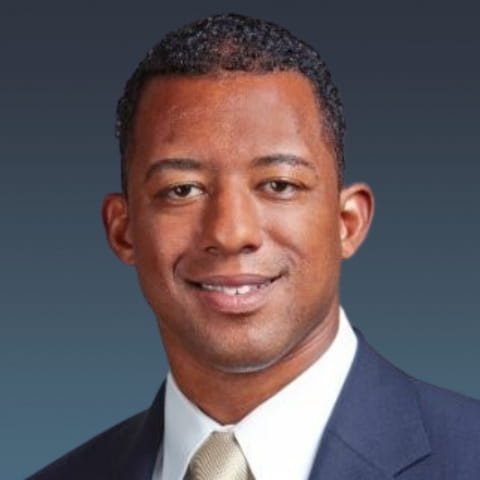Strategies for success in airport P3s: What to know for 2023

In this shifting environment for investment in new infrastructure, project success hinges on strategic navigation of unforeseen challenges and effective implementation of best practices. With billions of federal dollars available to supplement investment in our nation’s airports, now may be the best time for private companies to tap into the large-scale public-private partnership (P3) opportunities being created by airport authorities.
At the recent 2023 P3 Airport Summit in San Diego, industry leaders discussed the most current issues and explored possible solutions. Here, we will delve into our key takeaways from the conference, insights for bidding companies, and actionable steps to mitigate and meet these intricacies with confidence.
1. Securing investment capital
With the cost of capital and operating expenses dramatically increasing in 2023, airports are facing several dilemmas, including higher cost of capital, stricter credit terms, and worsening credit trends. The traditional route of borrowing money for airport development is becoming harder to navigate. While the Infrastructure Investment and Jobs Act (IIJA) has provided $25 billion for airport projects, it isn’t enough for all the redevelopment needed for the nation’s infrastructure. The good news: Investing in airports has led to above-average returns on investment on projects around the world. As travel returns to pre-pandemic levels, cities are racing to find ways to revitalize their airports. P3s and the additional funding options they can bring offer a proven solution; some of the country’s most-visited airports are exploring P3 structures to bring their facilities into the 21st century.
While a P3 approach may help solve many issues, it is not immune from challenges. As with any transaction, there will need to be negotiations around control, design budgets, and timelines. Tensions may rise, as many airport authorities are reluctant to relinquish control of their facilities, and the push-pull between public and private entities adds complexity to this dynamic. In their quest for viable funding terms and sources, operators will need to carefully consider how to best structure these projects. Feasibility studies, financial modeling, and innovative financing, as well as engaging with experienced professionals in the industry, are paramount.
2. P3 projects need to focus on the following key success factors
A. Early and meticulous planning and deal structuring: Many projects encounter setbacks because potential issues are not thoroughly contemplated at the initial stages. Make sure the right advisors are at the table to help think through the myriad of issues. Having the right conversations at the very start can help avoid costly changes and delays once construction begins.
B. Comprehensive stakeholder engagement and communication: Gaining support from politicians, local communities, and other relevant stakeholders is essential to avoiding opposition or social media campaigns that can impede progress. It’s important to engage stakeholders in the planning and design phases to reduce the risk of negative social media campaigns that might prevent the project from ever getting off the ground. Proper planning can help appease naysayers and avoid wasting money on design changes and extra engineering. While some may think a general contractor or developer can handle all aspects of a P3 project, these types of engagements require a suite of specialized skills that companies usually don’t know they need until it is too late.
C. Funding compliance and contracting: Contractual obligations, regulatory requirements, and grant conditions must be diligently followed to secure – then keep – funding, and to avoid pricey consequences of noncompliance. To help mitigate risk, a P3 contract should include provisions that establish the right hooks and incentives to maintain constant compliance.
Also consider contractual provisions to protect the contracting business from common dangers that they may face throughout a project lifecycle, such as:
- Delays in construction due to items the contractor cannot control, such as legal challenges, the inability of an authority to obtain permits, force majeure, etc.
- The risk of scope shrinkage, as operators may prefer to bring work in-house to support higher margins.
- Payment delays that can jeopardize contractors’ financial stability, hindering their ability to sustain profitable operations.
Owners should have experienced representation in place to help develop and review contracts; implement rigorous financial controls; monitor adherence to regulations, among other integrity monitoring; and avoid setbacks that could jeopardize the project’s success and availability of funds.
3. Overcoming DEI challenges
Diversity, equity, and inclusion (DEI) practices are a critical consideration for contractors and should be a priority from the outset. This may involve setting clear goals and targets for working with minority- and women-owned businesses; collaborating with local and state governments to create programs to support such businesses; and working with community organizations to build support for the project. However, DEI can present challenges, as some entities may take half-hearted or misleading approaches to meeting disadvantaged goals, such as hiring one well-established business for all their work vs. “spreading the wealth” to help others grow, or organizing subcontracting relationships that appear to support a minority business, but really funnel work and funds to others. It is essential to not only comply with DEI regulations, but also embrace the true spirit of DEI by fostering sustainable businesses that generate wealth within the community. DEI should go beyond being a checkbox item and be integrated into every contract to support fairness and equal opportunities for small and diverse businesses.
In conclusion
Airports revitalize communities and the economy. Modernizing them is an expensive investment, but ultimately a worthwhile one. Structured properly, P3s present opportunities to make the large scope of these projects attainable more cost effectively and efficiently, while allowing investors to make adequate returns for the risks they are taking. By proactively seeking guidance from industry professionals who understand the intricacies of P3s, companies can boost their chances of success and become better prepared for achieving excellence in this competitive and potentially lucrative market.
Reach out to our team for more information or to start evaluating your project opportunity.
Contact
Arthur Simonson, Managing Director, Project Finance & Consulting
732.380.8664
Stephen Little, Senior Manager
312.788.6046
Contact
Let’s start a conversation about your company’s strategic goals and vision for the future.
Please fill all required fields*
Please verify your information and check to see if all require fields have been filled in.

Inside Infrastructure: U.S. Infrastructure Plan Resource Center
Related services
This has been prepared for information purposes and general guidance only and does not constitute legal or professional advice. You should not act upon the information contained in this publication without obtaining specific professional advice. No representation or warranty (express or implied) is made as to the accuracy or completeness of the information contained in this publication, and CohnReznick, its partners, employees and agents accept no liability, and disclaim all responsibility, for the consequences of you or anyone else acting, or refraining to act, in reliance on the information contained in this publication or for any decision based on it.












